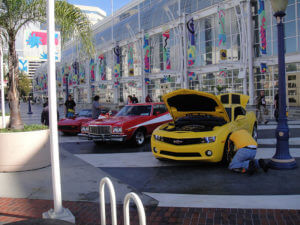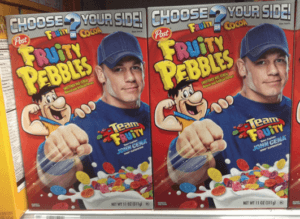Products in Disguise
Published on April 6, 2017, at 6:47 p.m.
by Julia Cione.
Almost every time I watch movies with some of my PR friends, we blurt out “product placement” when we see specific brands on screen. It makes us laugh because we know there was a team of people who decided whom they were going to target based on that genre of the movie.
Product placement has everything to do with who is watching. The team behind the brand placement looks into the target audience’s gender, age, interests and many other factors.

Based on the specific audience they’re trying to reach, the team then decides which brands are more likely to catch the target’s eye and benefit those brands and the medium they are being watched on. It’s all about the customer relationship. The audience is the key to the best product placement for every medium.
According to an article by Ian Zimmerman, Ph.D., implicit attitudes are “attitudes that unknowingly become associated with other attitude objects.” He described how an individual might unknowingly associate a specific product on a television show with his attitude about that program. An individual’s attitude about a certain product reflects the positive or negative influence a brand has on its product placement on screen by its viewers.
Whether you like to admit it or not, the product placement of a brand will likely implicitly stay in the back of your mind. You may unknowingly notice that brand more than other brands. Your behavior in relation to what product to buy at the grocery store has a lot to do with the things you see on screen. Audiences are more likely to mirror a character’s usage of products in movies they enjoy because of that implicit attitude phenomenon.
Take the 2007 film Transformers for example. Directed by Michael Bay, the audience already knew this movie was going to be filled with vivid action and iconic automobiles.
BMW, Jaguar, Ferrari, GMC, Chevrolet and Toyota are just a few to name of the big brand cars you see constantly throughout the movie. But there’s also Apple, Nike, Pepsi, Goodyear and many more that had paid product placements throughout the movie.

These brands all got in on this movie because the biggest target audience they’re all trying to reach is men. It makes sense that the audience-to-screen connection was highly influenced by these brands.
It reached me too. While sitting in traffic sometimes, I imagine cars transforming like in the movie. Guess which brands of cars I imagine doing the transforming? The ones in the movie. My imagination is a good example of my implicit attitude gained from the movie about those specific cars. So it benefits both the film itself and the brands because of that interaction with the audience.
I emphasized product placement in movies; however, movies make up a small portion of the massive market of product placements. According to Priceonomics, television makes up around 70 percent of those paid placements. It’s in television shows, music videos, press conferences, news stations and practically any highly watched medium. But it doesn’t stop there. Think about the food you buy at the grocery store. Are they promoting a movie on the box? A celebrity? Probably.

Product placement is everywhere. You truly can’t escape it. But every time a product is placed somewhere, the sole reason behind the specific placement is based on the people who will be watching.
Has there ever been an interview with Nick Saban, head coach of University of Alabama football, without a Coca-Cola product on the podium? I think not. As an Alabama fan, I think I’ll have a Coke Zero while I watch the Tide. And I can assure you many other Alabama fans will too.
So next time you’re watching something with friends, play my favorite game of spotting that brand. You’ll start to play the game in all things you see and a lot of times it’ll make you chuckle because you’ll know the method to the madness is you.




